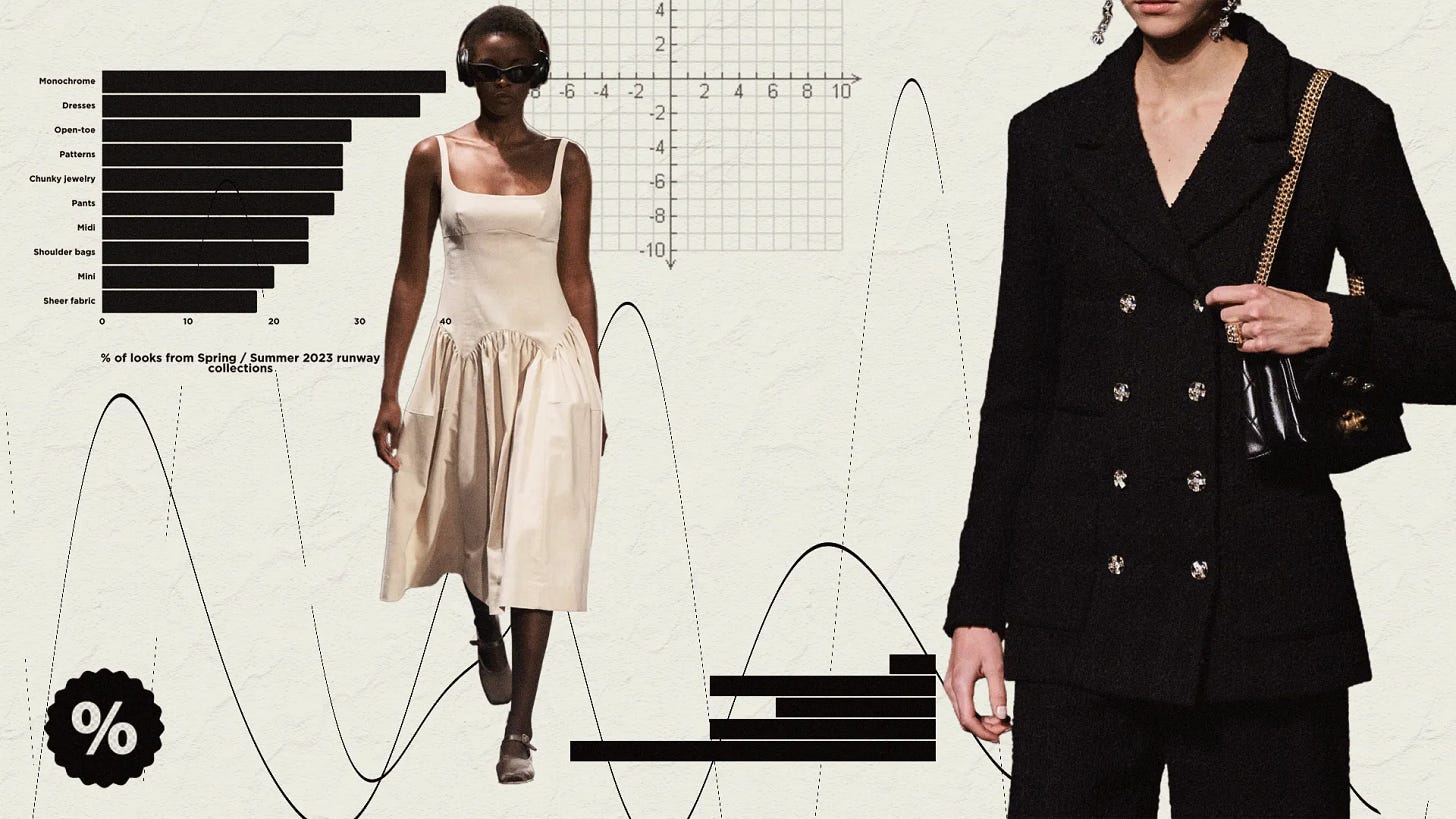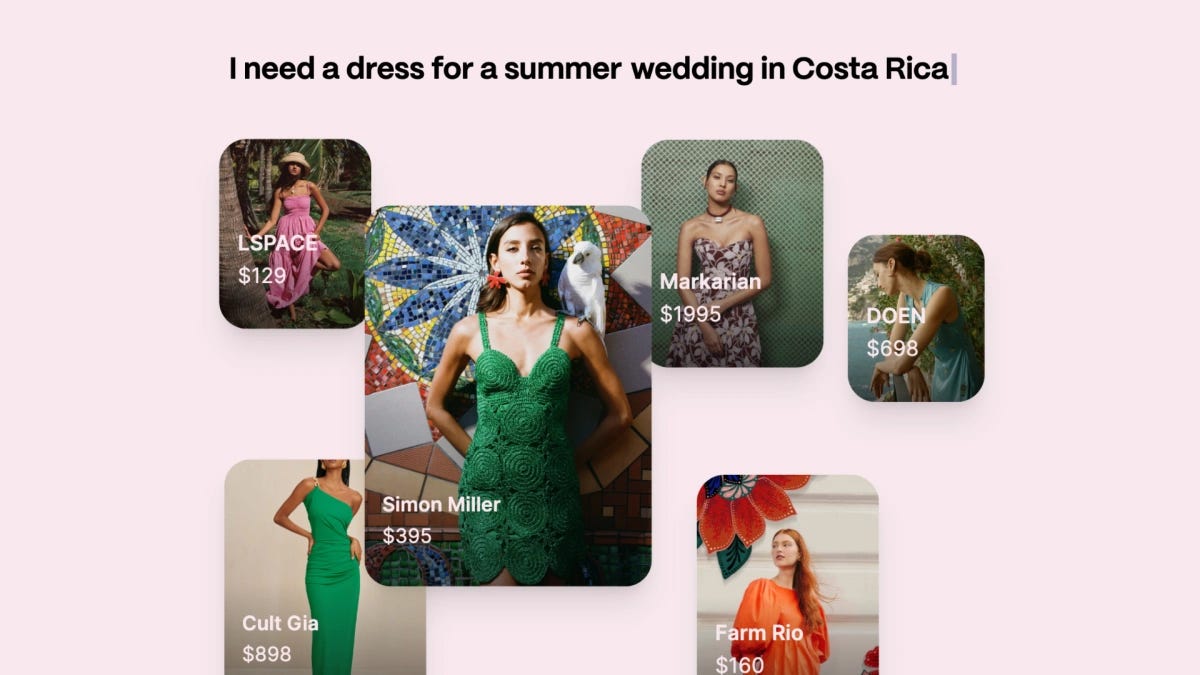How Data is Shaping the Future of Trends and Insights
In today’s fashion industry, data and technology are more than just tools—they’re game-changers, they're essential.
In the fast-moving world of fashion, staying relevant is more challenging than ever. Gone are the days when designers and brands could rely solely on instinct, educated guesses, or the occasional stroke of genius. Today, it’s data and technology that are setting the stage, driving everything from trend forecasting to personalized shopping experiences. Let’s dive into how these powerful tools are transforming the fashion industry, making it not only smarter but also more responsive to what consumers want—sometimes before they even know they want it.
The Magic of Data in Trend Forecasting
Imagine you’re a fashion designer, tasked with predicting next season’s must-have color or the silhouette that will take the runways by storm. In the past, you might have consulted trend reports or attended fashion weeks in Milan or Paris. Today, however, the real action is happening behind the scenes in the world of big data.
Big Data: The New Crystal Ball
Fashion brands are now harnessing the power of big data to stay ahead of the curve. By collecting and analyzing massive amounts of data from sources such as social media, e-commerce transactions, search queries, and even weather patterns, fashion brands can now predict trends with remarkable accuracy. This data-driven approach allows companies to identify emerging patterns in real time, such as rising interest in specific colors, fabrics, or styles, and quickly adapt their collections to meet consumer demand.
For example, platforms like WGSN and Edited use big data to track global shifts in consumer behavior, helping brands anticipate what will be in vogue months or even years in advance. This not only reduces the risk of producing unsellable inventory but also enables brands to stay ahead of the competition by launching collections that resonate with the market's current desires. The integration of big data into trend forecasting has made the fashion industry more responsive and aligned with consumer needs, ultimately driving both innovation and profitability.
AI and Machine Learning: Fashion’s New Brain
Artificial intelligence (AI) and machine learning are taking this a step further, adding a layer of precision that was previously unimaginable. These technologies sift through mountains of data to uncover patterns that might be invisible to the human eye. For example, AI can analyze millions of images from runways to predict the next big color trend or to detect shifts in style preferences.
This is more than just guesswork. It’s a science that allows brands to make data-driven decisions, reducing the risk of producing pieces with poor sales. By identifying these patterns early, brands can adapt their designs and marketing strategies to better align with consumer desires, leading to more successful launches, fewer markdowns and even less waste.

Unveiling Consumer Insights Through Data
Understanding what makes consumers tick is the holy grail for fashion brands. Today, data and technology are providing insights that are not only deep but also incredibly actionable.
The Age of Personalization
Modern consumers expect a shopping experience tailored just for them. Thanks to data analytics, this is now a reality. By tracking individual shopping habits, preferences, and even browsing history, brands can offer personalized recommendations that feel uniquely crafted for each customer.
Consider how e-commerce giants like Amazon or ASOS operate. They use sophisticated algorithms to analyze your past purchases, the items you’ve clicked on, and even how long you’ve lingered on a particular product page. The result is a shopping experience that feels intuitive and personal, with product suggestions that match your style and preferences.
Now, there’s a new kid on the Gen AI block. Set to launch this fall, Daydream, a startup that aims to streamline the online shopping experience via machine learning. While Google’s AI shopping tool sifts through countless fashion pieces on the internet, Daydream pulls products from 2,000 participating brands, including Net-a-Porter, Alo Yoga, Altuzarra, Jimmy Choo, and Dôen. The idea is for Daydream to successfully simplify the fashion search experience, as opposed to harnessing machine learning just for the sake of it.
Predictive Analytics: Anticipating Needs Before They Arise
Predictive analytics takes things up a notch by anticipating consumer needs before they even know they have them. By analyzing past behavior, these tools can forecast what you might be interested in next, ensuring that the right products are in the right place at the right time.

Driving Efficiency and Sustainability
Efficiency and sustainability are two of the biggest challenges in the fashion industry today, and data-driven technology is helping brands tackle them head-on.
Streamlining Supply Chains
The supply chain is the backbone of the fashion industry, and data analytics is making it stronger. By providing real-time visibility into every step of the production process, brands can identify bottlenecks, optimize logistics, and reduce lead times. This not only cuts costs but also improves product quality and consistency.
But there’s more. Data analytics also empowers brands to adopt more sustainable practices. By tracking the environmental impact of different materials and suppliers, companies can make informed decisions that align with their sustainability goals. Whether it’s reducing carbon emissions or reducing SKU numbers, data is helping brands make choices that are better for the planet—and for their bottom line.
Cutting Waste with Precision
Waste is a huge issue in fashion, with unsold inventory often ending up in landfills. Data-driven approaches are changing this narrative by enabling more precise inventory management. With predictive analytics, brands can produce exactly what’s needed, minimizing excess and cutting down on waste.
Moreover, data is fueling the rise of circular fashion models, where products are designed for reuse, recycling, or resale. By tracking the lifecycle of garments, brands can encourage consumers to recycle their pre-loved clothes, contributing to a more sustainable industry overall.

Trends and Consumer Insights Unveiled by Data
The marriage of data and fashion has revealed several key trends and consumer insights that are reshaping the industry:
Sustainability: Consumers are increasingly favoring brands that prioritize sustainability. Data shows that eco-friendly products and ethical practices are not just trends but expectations among today’s shoppers.
Direct-to-Consumer (DTC) Models: The rise of DTC brands is a direct result of data-driven insights. By bypassing traditional retail channels, these brands have more control over their customer relationships and can offer personalized experiences that resonate with modern consumers.
Customization and Personalization: The demand for personalized products is on the rise, with consumers looking for items that reflect their individual style. Data analytics makes it possible for brands to offer customized clothing and accessories at scale.
Digital Fashion: The emergence of digital fashion, including virtual clothing and NFTs, is a trend driven by tech-savvy consumers and data insights. Brands are increasingly exploring digital fashion as a way to engage with their audience and reduce the environmental impact of physical production.
Data, But Make it Fashion
Note from Mary: Does this topic peak your interests? I highly advise following @databutmakeitfashion on Instagram! It’s both insightful and sure to make you laugh.



In today’s fashion industry, data and technology are more than just tools—they’re game-changers. From predicting the next big trend to offering personalized shopping experiences, these innovations are helping brands stay ahead in a competitive market. But it’s not just about profits. Data and tech are also driving more sustainable practices, helping the fashion industry meet the demands of a new generation of conscious consumers.
As we look to the future, one thing is clear: the brands that succeed will be those that embrace the power of data and technology to create fashion that is not only stylish but also smart, sustainable, and deeply connected to the people who wear it.
What’s next? You choose!
Or let me know what topics you’d like to dive deeper into below!




